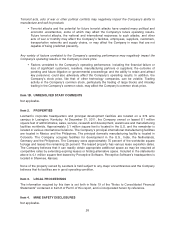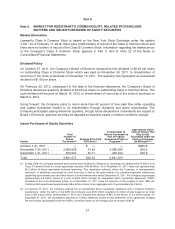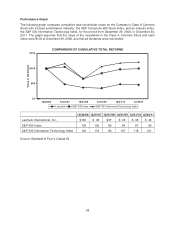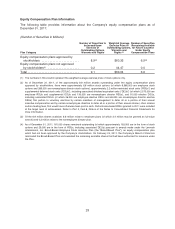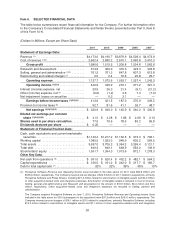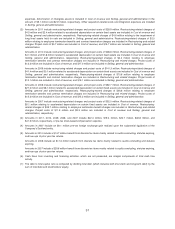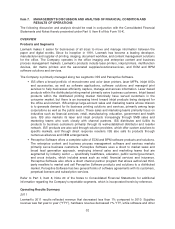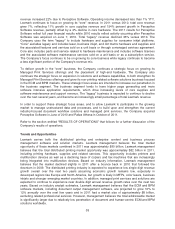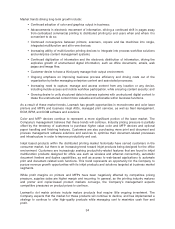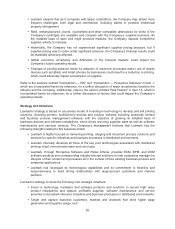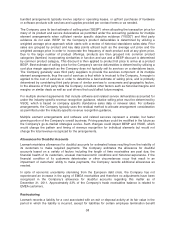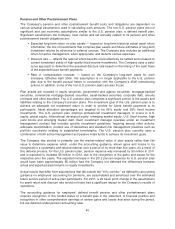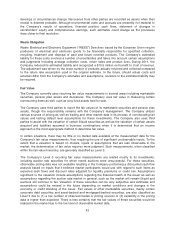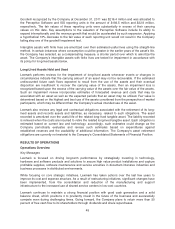Lexmark 2011 Annual Report Download - page 40
Download and view the complete annual report
Please find page 40 of the 2011 Lexmark annual report below. You can navigate through the pages in the report by either clicking on the pages listed below, or by using the keyword search tool below to find specific information within the annual report.• Lexmark expects that as it competes with larger competitors, the Company may attract more
frequent challenges, both legal and commercial, including claims of possible intellectual
property infringement.
• Refill, remanufactured, clones, counterfeits and other compatible alternatives for some of the
Company’s cartridges are available and compete with the Company’s supplies business. As
the installed base of laser and inkjet products matures, the Company expects competitive
supplies activity to increase.
• Historically, the Company has not experienced significant supplies pricing pressure, but if
supplies pricing was to come under significant pressure, the Company’s financial results could
be materially adversely affected.
• Global economic uncertainty and difficulties in the financial markets could impact the
Company’s future operating results.
• Changes of printing behavior driven by adoption of electronic processes and/or use of mobile
devices such as tablets and smart phones by businesses could result in a reduction in printing,
which could adversely impact consumption of supplies.
Refer to the sections entitled “Competition — ISS” and “Competition — Perceptive Software” in Item 1,
which are incorporated herein by reference, for a further discussion of major uncertainties faced by the
industry and the Company. Additionally, refer to the section entitled “Risk Factors” in Item 1A, which is
incorporated herein by reference, for a further discussion of factors that could impact the Company’s
operating results.
Strategy and Initiatives
Lexmark’s strategy is based on a business model of investing in technology to develop and sell printing
solutions, including printers, multifunction devices and solution software including enterprise content
and business process management software, with the objective of growing its installed base of
hardware devices and software installations, which drives recurring supplies sales as well as software
maintenance and services revenue. The Company’s management believes that Lexmark has the
following strengths related to this business model:
• Lexmark is highly focused on delivering printing, imaging and document process solutions and
services for specific industries and business processes in distributed environments.
• Lexmark internally develops all three of the key print technologies associated with distributed
printing: inkjet, monochrome laser and color laser.
• Lexmark, through Perceptive Software and Pallas Athena, provides ECM, BPM, and DOM
software products and corresponding industry tailored solutions to help companies manage the
lifecycle of their content and processes all in the context of their existing business process and
enterprise applications.
• Lexmark has leveraged its technological capabilities and its commitment to flexibility and
responsiveness to build strong relationships with large-account customers and channel
partners.
Lexmark’s strategy involves the following core strategic initiatives:
• Invest in technology, hardware and software products and solutions to secure high value
product installations and capture profitable supplies, software maintenance and service
annuities in document-intensive industries and business processes in distributed environments;
• Target and capture business customers, markets and channels that drive higher page
generation and supplies usage; and
36


